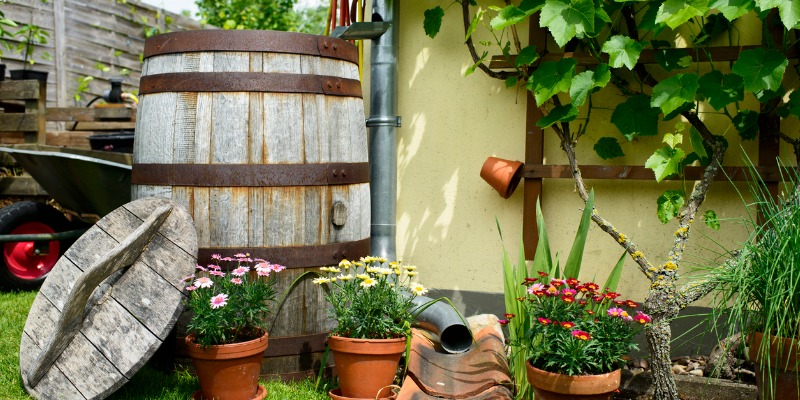How to Build a Rain Garden
Rain gardens use your lawn to collect rain and melted snow running off your grass, roof, and driveway. You can use a section of your lawn to act as a natural filter for stormwater runoff, to reduce the amount of water entering the storm drain system. This helps protect local waterways from pollution, while also avoiding flooding. You can build a rain garden to complement your landscape, using the space available on your property. Here’s how to build a rain garden.
What are the Benefits of a Rain Garden?
Rain gardens help protect the natural water cycle as well as local natural water resources. They can:
- Reduce the number of pollutants from things such as pesticides from entering waterways
- Support our groundwater system
- Create a lovely low maintenance garden feature that requires little to no watering
- Attract local birds and butterflies
- Provide a place for beneficial insects like dragonflies
Rain gardens also allow about 30% more water to soak into the ground compared to a traditional lawn.
Add a low-maintenace rain garden in your home this spring! To learn more about rain gardens and what supplies you’ll need, contact our experts at Grand River Natural Stone today.
3 Steps to Build a Rain Garden
Follow these steps to build your rain garden:
- Choose the Site
A typical rain garden is about 10-30 square meters. Rain gardens need at least 3 meters of separation from your house, preferably at a low spot in your yard. Look for areas where water tends to collect following a heavy rainfall to help you scout out the ideal location. You need an area that also gets at least half a day of full-on sunlight, or preferably, full sun. A slope of at least 1% grade that leads from either your driveway or roof to the rain garden is also required. Mark out your garden with stakes and string.
- Soil Prep
Remove the existing grass from your chosen location. Then create a depression 85 centimetres deep by removing soil from the entire area you plan to use as your rain garden. Slope the sides of the garden to form a gradient towards the bottom of the garden. Move the soil you remove to the lowest side of the garden to make a slightly higher area. This helps the rain garden do its job and contains the stormwater so it can slowly drain through. You should then redirect the downspout from your roof toward your depression, so the water is collected instead of running off your property. A 60 centimetre layer of rain garden soil mix is then added to the depression.
- Select Your Plants
Native plants make your rain garden more effective and can thrive in challenging conditions. Consider if you prefer a traditional or modern rain garden. For your rain garden design, every detail counts including plant height, when the plants will flower, colours, and the sun exposure of your garden.
Be sure to choose ornamental grasses and sedges such as big bluestem, Canada wild rye, tufted hair grass, or little bluestem to create a strong root mass to stop weed growth and prevent erosion. Some lovely flowering plants ideal for rain gardens include wild columbine, wild bergamot, and black-eyed Susans. For height add some shrubs such as red-osier dogwood, eastern ninebark, nannyberry, or common elderberry.
Wondering what you can do with your backyard? How about a rain garden? To learn more about rain gardens and what you need to do to create an effective garden, contact our professionals at Grand River Natural Stone today.
Sources:

